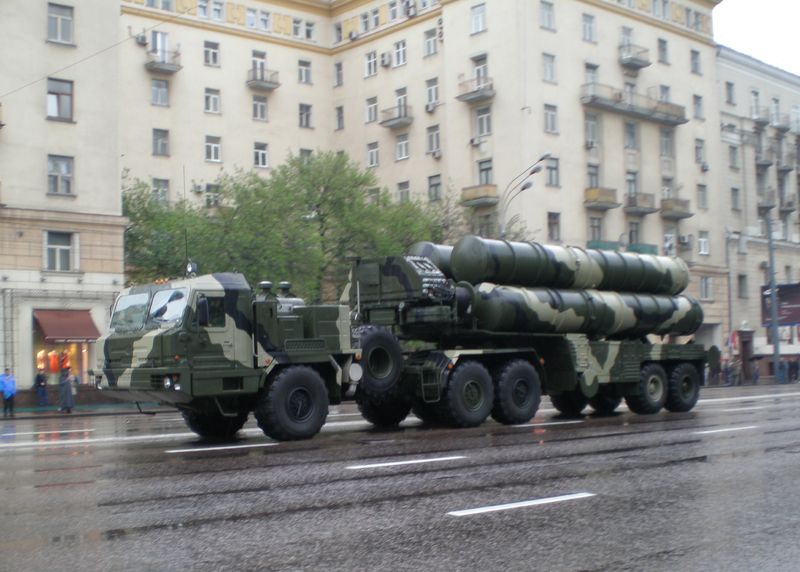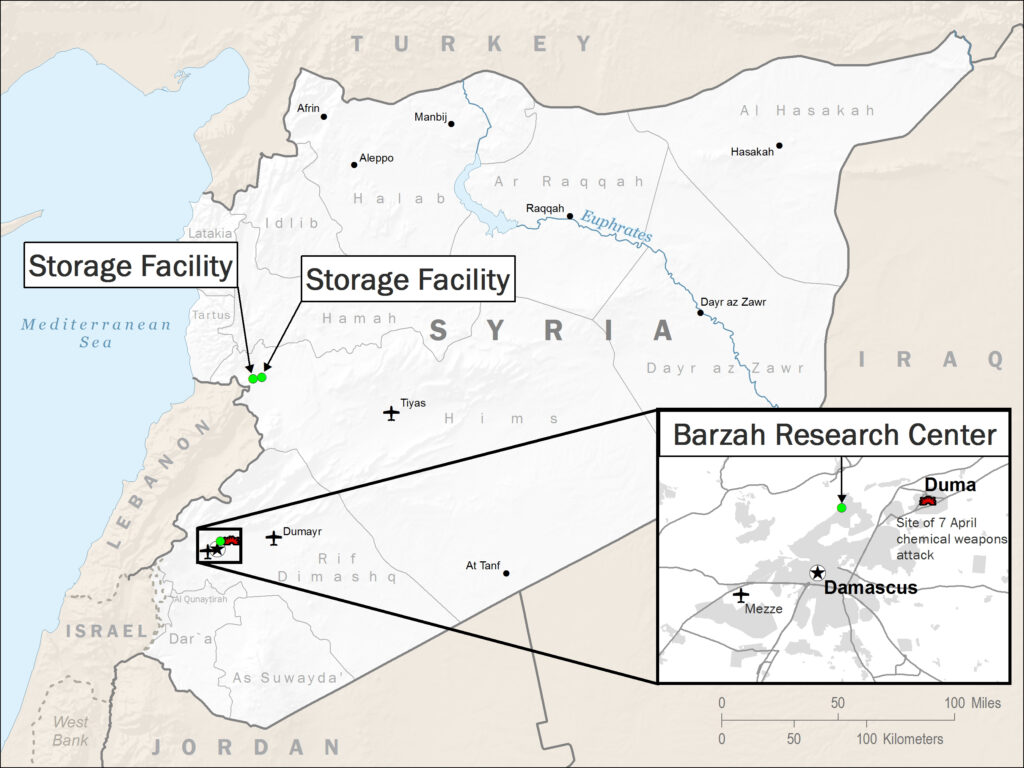Pentagon: Syria Struck From All Sides, No Missiles Intercepted
Posted on

WASHINGTON: In one of the largest coordinated international air operations in years, over 100 American, British and French guided missiles slammed into three Syrian chemical weapons facilities early Saturday morning, launched from an armada of aircraft, submarines, and ships offshore.
The Pentagon was careful Saturday to say that the assault didn’t seek to topple the regime of Syrian strongman Bashar al Assad. But the strike — and the Syrian failure to stop any of the missiles — represents a stark reminder that despite the protection of Russian air defenses, the United States and its NATO allies can hit Syria at will.
And the strikes might not be over. Despite Defense Secretary James Mattis on Friday night characterizing the strike as a one-time event, Trump administration officials on Saturday took a much harder line. “The president has made clear that we will act again,” one administration, speaking on the condition of anonymity, said. “There will be further costs if Assad uses chemical weapons again….we’ll continue to keep viable military options on the table.”

Russia S-400 Triumf anti-aircraft missile system
The Russian Factor
No Russian air defenses were activated during the attack, Lt. Gen. Kenneth F. McKenzie Jr. told reporters at the Pentagon Saturday, though Syria launched about 40 Soviet-era ground to air missiles , mostly after the attack was already concluded.
The Russian Defense Ministry claimed that Russian-made Syrian air defenses shot down 71 out of 103 missiles fired by the United States and its allies, but McKenzie said no missiles were shot down, and none malfunctioned.
Russia maintains a network of its own S-300 and S-400 missile defense systems in Syria, and the Assad regime also has an arsenal of older, Soviet-era missile defense systems. One Russian military official on Saturday said Moscow would consider sending more S-300 units to Syria.
While the Russians were not told of the strike in advance, they were given something of a heads up through the hotline that American and Russian military officers maintain for air operations over Syria, U.S. military officials said.
“We’re not cooperating with [Russia] in Syria,” McKenzie said. “We don’t want to get into a fight with them, they don’t want to get into a fight with us. But they don’t have a veto over what we do in Syria.”
Russian President Vladimir Putin condemned the strikes, calling the limited attack an “act of aggression against a sovereign government” and called for emergency meeting of the U.N. Security Council to discuss the attack.

Striking from all Sides
The missiles struck at the heart of the Syrian chemical weapons enterprise, taking out three sites, one in Damascus, and two further north near the city of Homs, that produce and story chlorine and sarin precursor materials.
The strike was remarkable for the number of widely dispersed assets used to hit the three targets:
- From the Mediterranean, the U.S. Virginia-class submarine USS John Warner fired six Tomahawk missiles, and the French frigate Languedoc launched 3 SCALP missiles.
- In the Red Sea, the Ticonderoga-class guided-missile cruiser USS Monterrey fired 30 Tomahawk cruise missiles, while the Arleigh Burke-class destroyer USS Laboon launched another seven Tomahawks.
- In the Arabian Gulf, another Burke, the USS Higgins, shot an additional 23 Tomahawks.
- Additionally, U.S. Air Force B-1 bombers launched nineteen 2,000-lb. Joint Air-to-Surface Standoff Missiles (JASSM). The extended range variant, which was used in this strike, has a range of about 1,000 km.
- British Typhoon and Tornado aircraft also launched 8 2,900-lb. Storm Shadow cruise missiles with a range of over 500 km.
- French aircraft shot a further nine SCALPs.
It’s not yet clear which bases the allied aircraft launched from, although the B-1s probably came from al-Udeid in Qatar and Anglo-French aircraft from Europe.
It’s also not clear if there will be more strikes. Secretary of Defense James Mattis on Friday night called the strikes a “one time shot,” adding, “right now we have no additional attacks planned.”
No U.S. official would commit to more strikes if the Assad regime used chemical weapons against civilians again. The strikes pulled the United States deeper into the complex civil war in Syria that has claimed about half a million lives. It also adds a new tension to the deteriorating relationship between Moscow and Washington.
Subscribe to our newsletter
Promotions, new products and sales. Directly to your inbox.
